

Jerry W.
Porter CEO/Publisher
PO Box 1292, Corinth, MS 38835-1292
Cell: 662-643-6842
Email: read.newsflash@gmail.com



Jerry W.
Porter CEO/Publisher
PO Box 1292, Corinth, MS 38835-1292
Cell: 662-643-6842
Email: read.newsflash@gmail.com
In the world of puzzles, a word-dot puzzle requires us to connect seemingly random points to reveal a hidden image or message. Each dot represents a small part of the bigger picture, and it’s only by drawing lines between them that we can see the whole.
The Community News Flash newspaper plays a similar role in our community, acting as the dot connector that links people through the positive stories we print each month.
In a word-dot puzzle, every dot is crucial. Missing even one can obscure the final image. Similarly, every story, event, and individual in our community is essential to the vibrant tapestry we weave. By connecting these
The Suits You Too clothing ministry will be hosting a suitcase drive. We are looking for a small to medium-sized suitcase. The suitcases will be used to carry donated clothes. Contact Jerry W. Porter at (662) 6436842 to pick up suitcase donations.

dots through our newspaper, we help reveal the beauty, resilience, and unity that define us.
Each month, the Community News Flash gathers and shares stories that might otherwise go unnoticed. These stories are the dots that highlight acts of kindness, celebrate achievements, and showcase the everyday heroes among us. They are the moments that, when connected, tell the story of a community that cares, supports, and grows together.
Just as solving a dot puzzle requires patience and attention to detail, creating our newspaper involves carefully listening to and documenting the diverse experiences of our readers. It’s about recognizing that every person and event has value and contributes to the larger narrative of who we are as a community.
In today’s fast-paced world, it’s easy to feel disconnected and isolated. Negative news often dominates the headlines, overshadowing the good that happens around us. The Community News Flash aims to counteract this by focusing on the positive, reminding us that there is much to be hopeful about. By connecting these positive dots, we create a more comprehensive and uplifting picture of our community.
Our role as the dot connector extends beyond just reporting; it’s about fostering a sense of belonging and engagement. When readers see their stories and those of their neighbors in print, it reinforces the idea that everyone’s contribution matters. It inspires others to get involved, to share their own stories, and to connect with one another in meaningful ways.
Through the pages of the
Community News Flash, we aim to build bridges, foster understanding, and encourage collaboration. Each article, feature, and photograph is a thread that ties us closer together, strengthening the fabric of our community. By highlighting the positive and shining a light on the good, we help to create a sense of pride and solidarity among our readers.
As we continue to publish the Community News Flash, we remain committed to our mission of being the dot connector for our
community. We invite you to join us in this endeavor—share your stories, celebrate your successes, and help us connect the dots that make our community a better place.
Together, we can complete the puzzle and reveal a picture of hope, unity, and positivity. Let’s continue to connect the dots, one story at a time.
Whoo! Whoo! Until next time! All aboard!
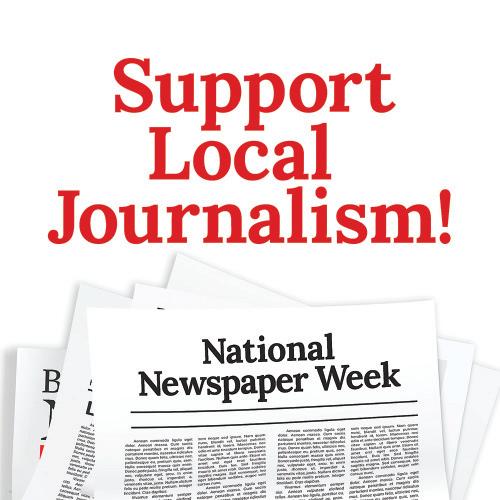


Stop by our new location at 712 S. Tate St., Corinth, Mississippi, or contact me, Jerry W. Porter, at (662) 643-6842, or visit us on Facebook to get more information on this ministry. If you wish to make a donation to this ministry, it would be greatly appreciated. Please use the Cash App at $SuitsYouToo or mail your donation to PO Box 1292, Corinth, MS 38835.
1. What vine is mentioned in the Old Testament as bearing poisonous berries?
2. What kind of tree does Psalms compare a wicked man to?
3. What prophet complained about the people making sacrifices under spreading oaks, poplars, and elms?
4. What kind of weed does Jesus say will be separated from the wheat at the last judgment?
5. What kind of wood was the ark of the covenant made of?
6. What prophet was a "dresser of sycamore trees"?
7. What kind of trees did the exiled Jews hang their harps upon?
8. What did Delilah use to bind the sleeping Samson?
9. What defeated king was buried with his sons under an oak tree?
10. Which tree does Jesus say can be uprooted and thrown into the sea- if one has enough faith?
11. What city was the "city of palm trees"?
12. What tree's foliage was found in the carvings inside the temple?
13. What king appointed an overseer to watch after the fruits of the olive trees and sycamores?
14. Who was killed after his hair was caught in an oak's branches?
15. What man met the Lord at the oaks of Mamre?
16. What prophet had a vision of a branch of an almond tree?

Send in your answers to the following Bible Trivia Questions and take a chance at winning a complimentary bible from the Community News Flash. Random drawing will be held monthly and contestant can only win twice within a 6 month period.

1. Ishmael (Genesis 16:1-12)
2. Two (Genesis 19:1-22)
3. Peter (Acts 12:1-19)
4. He was holding a drawn sword (Numbers 22:22-35)
5. To give him instructions on conquering Jericho (Joshua 5:13-15)
6. The Ethiopian Eunuch (Acts 8:26-39)
7. Gabriel (Luke 1:5-38)
8. Samson (Judges 13:1-20)
9. Jezebel (I Kings 19:1-8)
10. He blessed Jacob (Genesis 32:24-29)
11. Cornelius (Acts 10:1-8)
12. Gideon (Judges 6:11-23)
13. Cherubim (Genesis 3:24)
14. Isaiah (6:5-7)
15. The Assyrians (2 Kings 19:35)
16. Abraham (Genesis 22:11-18) elders (Exodus 24:9-10).
While we don’t normally think of grieving for a loved one as something that brings joy, or that mourning can also contain a joyful aspect, the fact that families come together to celebrate the life of their loved one clearly contains something joyful within it. Siblings and other relatives who may have grown distant find time to communicate their love for each other and share their feelings and experiences with their family. As we remember and communicate aspects of the departed person’s life, we often realize what a good and blessed life they had. This doesn’t mean that we forget their defects, but these often fade into the background as their positive characteristics become more prominent. And if we believe in the afterlife, there is the joyful hope that we will see our dearly departed again, and that they are now reunited with their previously deceased family and friends. In sum, we should realize that positive and negative emotions can coexist. A time of grief doesn’t preclude a sense of joy and amid mourning we may also be experiencing a time of great personal growth which has meaning for our lives.
–Christopher Simon
(StatePoint) America’s moms–along with families, businesses and the nation’s economy–are struggling without high-quality, affordable child care. That’s why moms have come together to establish the Moms’ Seal of Approval on Child Care, to identify candidates who will stand with families by advancing child care policy solutions that address affordability, accessibility and quality.
MomsRising Together, the online and on-the-ground organization of 1,044,000 mothers and their families working to improve family economic security, created the new program in partnership with parents to help voters identify candidates who will support solutions to the country’s child care crisis, to raise the profile of child care as a campaign issue and to challenge candidates to commit to child care solutions that meet the needs and standards of America’s moms.
“Moms, parents and families across the nation are joining together in saying we are ready to speak out for affordable, accessible, high-quality child care. We will only end the child care crisis that is costing families, businesses and our economy so dearly if we elect leaders with a real commitment to finding solutions,” said MomsRising executive director and CEO, Kristin Rowe-Finkbeiner.
Finding quality, affordable child care is one of the greatest challenges facing young families. Child care costs more than public college tuition in many states, and nearly half of Americans live in child care deserts, where there is a significant shortage of providers. As a result, millions of



moms and caregivers have been forced out of the workforce, jeopardizing their financial security, exacerbating the country’s labor shortage, and harming businesses and the economy.
At the same time, early educators who work at child care programs are grossly underpaid, with many leaving the field because they can make higher wages in fast food or other sectors.
The candidates who have earned the Moms’ Seal of Approval on Child Care are listed here: https://rb.gy/4nxvut
“We applaud every candidate who has earned the Moms’ Seal of Approval on Child Care and expect to be able to keep growing that list,” Rowe-Finkbeiner added.
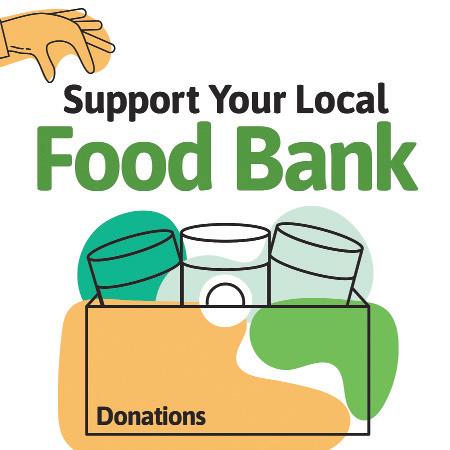

In spite of our reputation, the statistics say that we seniors aren’t bad drivers.
A 2010 report by the Insurance Institute for Highway Safety says that, “Contrary to expectations, senior drivers aren’t causing more crashes than they used to.” Rates of crashes in drivers 70 and older have actually declined.
The catch, however, is that we must know when to stop or limit our driving. Once we start making driving mistakes, the results can range from merely annoying (having our driving restricted) to catastrophic (a serious crash or death).
Ask yourself: Are other drivers honking at you more lately? Have you hit a curb or mailbox? Do you have a hard time backing up, possibly because it’s difficult to turn around in the seat? Do you wonder which way to go at exit ramps? These might be signs that you need to think about whether to continue driving. There are tools and information online to help you decide if you need to stop or limit your driving.
Go to www.hartfordauto.thehartford.com and search for Crash Risk Assessment. Also look for Safety for Older Drivers. Take the quiz for drivers age 50 and older.
Consider taking a senior driver refresher course. Go to AARP.org (or call 1-888-227-7669) and look for Driver Safety Program. Locate a class near you or sign up for the online class. Classes are often held in senior centers, adult education classes and hospitals.
If you’re concerned about an elderly parent who is still driving, AARP has put together an online seminar that helps explore the topic. Go to AARP. org and search for “We Need to Talk” or call the AARP number above.
Matilda Charles regrets that she cannot personally answer reader questions, but will incorporate them into her column whenever possible.
Write to her in care of King Features Weekly Service, P.O. Box 536475, Orlando, FL 32853-6475, or send email to columnreply@gmail.com.
DEAR DR. DONOHUE: What is the difference between anxiety and panic attack? I am claustrophobic, and I need to fly from the West Coast to the East Coast and back. I can’t do so because of my problem. I have tried therapy several times, but it did not help. I do not want to go that route again. Can you give me some suggestions on how to be able to fly with this problem? Is there a medicine I could take before I get on the plane? — Anon.
ANSWER: Anxiety is excessive worry. In some cases, worry is appropriate. But with pathological anxiety, the worry is about things that don’t merit worry or about imagined things that truly merit no concern. Under “anxiety disorders” are many different conditions, each with a slightly different set of symptoms. They all share some things in common.
Panic attacks are the sudden onset of terror in places where such terror is inappropriate. The attack builds to a high point in a matter of 10 minutes or less. The attack can take place in a perfectly neutral situation, like shopping in the grocery store. During an attack, the heart beats fast, people become short of breath, and they often sweat and fear they are at death’s door.
Phobias are unreasonable fears of people, places and things that don’t engender fear in others. Claustrophobia is the fear of being in an enclosed space, like an airplane. Phobias can bring on a panic attack. Maybe your phobia is not so much a fear of enclosed space but a fear of flying.
I’m not certain these distinctions are of importance to you. The important thing for you is to uproot whatever it is that paralyzes you when you must board an airplane or to blunt it so you can function. Mental health professionals can get you over anxiety, panic attacks and phobias. I’m not positive what you mean by “going that route” again. Do you mean a detailed probing into your childhood and such matters? That isn’t usually necessary. The doctor might prescribe a medicine that calms you and that you take only when needed. You won’t become dependent on that medicine every day of your life. You use it only for the situation that throws you into such high anxiety.
DEAR DR. DONOHUE: My husband, 78 years old, fell off a ladder, and his head struck the sidewalk. I insisted he go to the emergency room, although he put up a fight.
In the ER, the examining doctor gave him a very complete examination. He ordered a CT scan of his brain. The doctor found nothing wrong, and the scan was said to be normal. They sent us home. This week we got a report of the scan. It says my husband has brain atrophy. I had to look up the meaning of atrophy. My husband was never an Einstein, but what is the significance of brain atrophy? He carries on a reasonable conversation, and he reads the paper carefully. Need we be concerned? I’m upset. He isn’t. — W.Y.
ANSWER: Atrophy means shrinkage. If everyone your husband’s age had a brain scan, most of their reports would say brain atrophy. It’s something that happens with age. It doesn’t imply any serious trouble. It shouldn’t scare you or him.
***
Dr. Donohue regrets that he is unable to answer individual letters, but he will incorporate them in his column whenever possible. Readers may write him or request an order form of available health newsletters at P.O. Box 536475, Orlando, FL 32853-6475.





By Francine Papadimitrakis
It's sunset, and the scene is like a clip from a movie. The wind is strongly blowing from the north, with gusts powerful enough to knock down a half-full glass of wine. We are parked at the edge of the sea, between trees. The mountains around us are brown—a byproduct of a drought. The sea is crystal clear blue, and the sky is turning shades of orange and red.
My wet bathing suit hangs from a branch of
icons.
Any minute now, I expect a movie director to shout out “cut’, as he ends the scene. But he never does; in fact, the scenery becomes more beautiful by the minute. The winds are changing, the gusts becoming a little more gentle. The soft ripples on the sea tells me that perhaps the winds will soon become a breeze.
Such is life; strong gusts turn into gentle breezes. The thing is, we just need to learn to adjust our sails and let the winds carry us.
The skies are getting darker, and soon the stars will shine above us.
If this is a clip from a movie, I can only wish that the reel of the film will freeze for all eternity. If that is not the case, then this moment will live in my memories as one of the most beautiful scenes of my life.

a tree. The wind sways it like a ghost dancing a gentle waltz. Directly behind us is a small church that is filled with hand-painted
It is said that we experience happiness as a series of pleasing moments; collect them, remember them, reflect on them, and let them carry you when facing challenges.
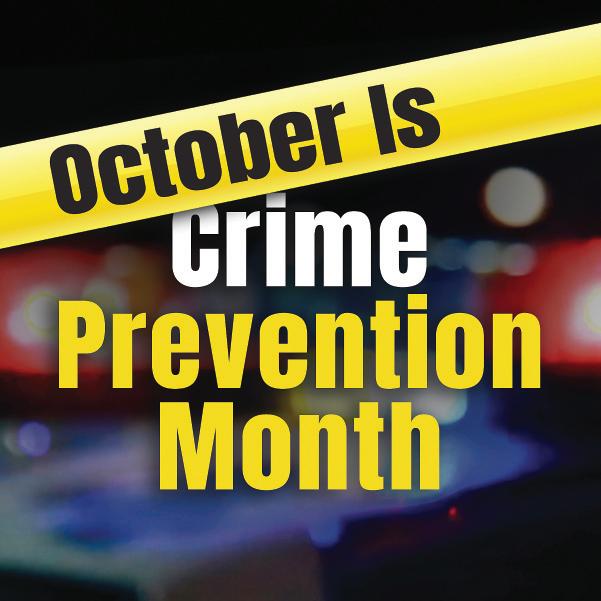
“Fear of death often drives us into death, but by befriending death, we can face our mortality and choose life freely.”
– Henri Nouwen
Running away from the thing that you fear, or even just turning away from it or trying to ignore it is a recipe for disaster. The real or imagined monster that is chasing you will keep chasing you until you turn around and face it head on. This is as true in real life as it is in the dream world. People who are beset by recurrent bad dreams where they are being chased by a monster, however ill-defined or unseen it is, are sometimes advised to stop running and turn around and look at whatever is chasing them, and this frequently puts an end to this recurring dream. Boxers know that turning away from your opponent or flinching only gives your opponent a “free shot” at you because you can’t see the blow that’s coming your way. To strike your opponent you have to be close enough for them to hit you. Even in tennis it’s natural to fear playing the net because the ball may be coming right at your face. But keeping your racquet up and your eyes towards the ball improves your odds of hitting it back rather than being hit. And what is the thing that most of us fear the most? Probably death, or the infirmities which lead to death, and it wasn’t so long ago that the word “cancer” was often heard only in whispers, people being afraid to say the word out loud. Ironically, those who have faced death, and perhaps even befriended it have less fear of it. This doesn’t mean that we should live recklessly or that we should court death, but it does mean that by looking death in the face we can live our lives more fully.
–Christopher Simon

(StatePoint) Everyone deserves a stable financial future. From analyzing retirement needs to building diversified investment portfolios, a great financial planner helps individuals and families reach their goals.
But with a growing number of financial planners retiring and trillions of dollars expected to pass from baby boomers to their heirs over the coming decades, there is rising consumer demand for professionals dedicated to providing competent, ethical financial planning advice.
Interested in becoming a financial advisor or expanding your skills? Here’s how earning CERTIFIED FINANCIAL PLANNER® certification will help you better serve your clients.
It builds trust: The cornerstone of CFP® certification is the commitment of CFP® professionals to act as a fiduciary at all times
when offering financial advice. The fiduciary standard also encompasses the duty of loyalty, the duty of care and the duty to follow client instructions. This commitment means that you agree to place your clients’ interests above yours, and to consider your clients’ goals, risk tolerances and personal circumstances while working with them.
It expands your knowledge and experience: CFP® professionals complete a two-part education requirement that includes a bachelor’s degree or higher from an accredited college or university as well as coursework on 72 financial planning topics through a CFP Board Registered Program. Certification also demonstrates that you have passed the rigorous CFP® exam and that you have thousands of hours of practical experience in the field.
It will alter your approach: Today’s con-
“Show me, Lord, my life’s end and the number of my days; let me know how fleeting my life is.”
sumers value a holistic approach to their financial management. CFP® professionals are trained to offer just that.
It builds confidence: Consumers are more inclined to take your recommendations if they feel they’ve partnered with the right financial advisor. What are they looking for in an advisor? The statistics speak for themselves: 86% of consumers prefer an advisor who has passed a certification exam and completed a rigorous education program, and 90% see an advisor’s certifications as important.
To get started on your new career today, visit cfp.net/account-registration.
Earning the right financial planning credentials is not just an investment in your own future; it’s a way to help more Americans meet their goals and pave the way to a secure tomorrow.
Extrapolation into the near future is hard enough. Most of us have no idea how we will be feeling tomorrow, let alone next week or next month. Our plans for the near future are so fraught with uncertainty that many of us prefer not to make them at all, or to hedge our bets by saying “if God wills it” when discussing whether we’ll be somewhere or not. But for the distant future, the one thing we know for sure is that we won’t be there. We know with some certainty that in fifty, or perhaps a hundred years we’ll be dead, and this fact ought to color our thoughts about life, and not just our life, but all life. While this might appear to be a gloomy perspective, it doesn’t have to be. Realizing that life is ephemeral makes it precious. We should cherish our time with our parents and grandparents precisely because we won’t have them with us for very long, at least when considered in the grand scheme of things. And not just our families, but our pets, and all of God’s creatures, including the plants, are here today and gone tomorrow. Take time to smell the roses, and perhaps also to make a gift of them to someone you love.
–Christopher
Simon

By Lucy Weber
Life as a mother of two young boys makes for a fastpaced life.
Kindra Brown Shannon of Medina, Tenn., knows the drill well. Get off work from your eight-hour job at a pediatric clinic, pick up the 3-year-old and 6-year-old, and then head straight to a baseball field. “I’m busy, busy, busy,” said Shannon. “I know how my mom felt,” she said.
Shannon grew up in Bethel Springs, playing three sports. She played travel softball and AAU basketball and added soccer in high school to keep in shape for her other sports. “My parents (Dwight and Yolanda Brown) were most definitely there.” Her dad was her coach for a number of years, and mom supported Shannon as her cheerleading squad.
The 30-year-old follows the lead of her parents. “If you have kids, your kids’ needs come before yours,” she said about the philosophy she and her husband Kyle follow for 6-year-old Kyrie and 3-year-old Khylan. “Always show up and be there. I love to be at every single game if I can. I’m thankful to have my parents and husband there too. My parents literally come from an hour away every weekend.”
Shannon’s current schedule actually gives her a breath-

In the 2024 election, your vote carries the power to shape the future. This is more than a decision between candidates—it's a choice about the direction our country will take. Do we choose unity, progress, and opportunity for all? Or do we stay divided and stagnant?
Your vote is your voice, and your choice will impact generations. Make it count. The choice is yours.


er nowadays. She went back to college to finish her bachelor’s degree with a toddler and then had a second child by the time she started on her master’s degree. She received her bachelor’s in sports recreation management and her master’s degree in public health administration in 2023. “I had a baby when I finished my bachelor’s degree and started on my master’s degree a month after receiving my bachelor’s.
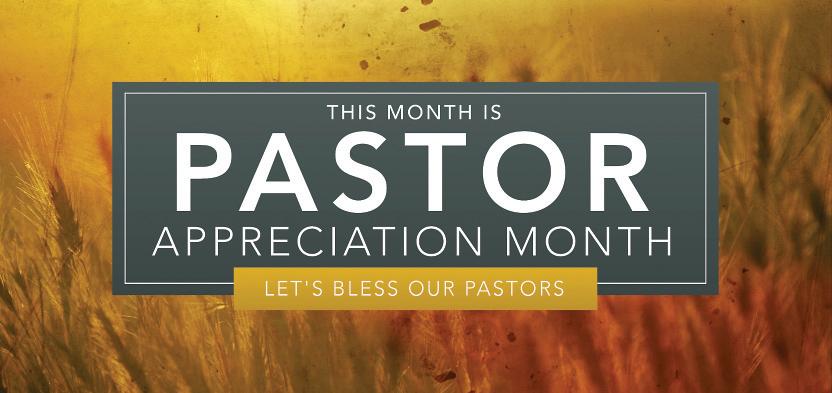
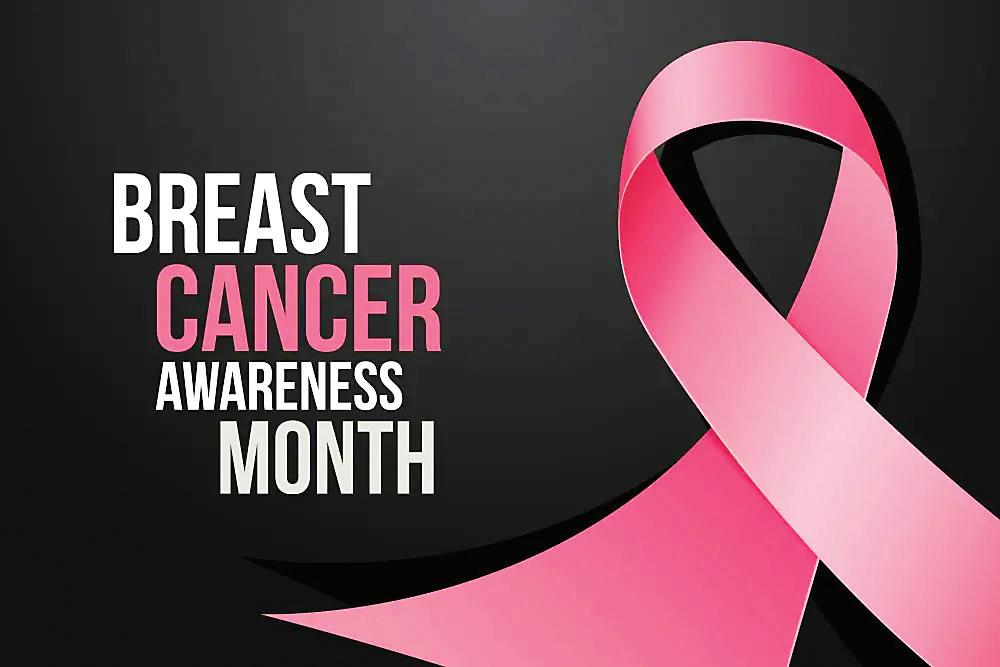
Global Statistics: Breast cancer is the most common cancer worldwide, with more than 2.3 million new cases diagnosed each year.It is the leading cause of cancer death in women globally, responsible for approximately 685,000 deaths annually.
United States Statistics: In 2024, an estimated 297,790 new cases of invasive breast cancer will be diagnosed in women.
Around 43,700 women in the U.S. are expected to die from breast cancer this year. 1 in 8 women (about 13%) in the U.S. will develop breast cancer at some point in their lifetime.
Breast cancer in men is rare but significant, with about 2,470 new cases expected in 2024 and 530 deaths.
Survival Rates:The overall 5-year survival rate for breast cancer in the U.S. is around 90%, but this depends on the stage at diagnosis.
For localized breast cancer (cancer that hasn’t spread beyond the breast), the 5-year survival rate is about 99%.
Risk Factors: The risk of breast cancer increases with age, with most cases diagnosed in women over the age of 50.Family history, genetics (such as mutations in the BRCA1 or BRCA2 genes), and lifestyle factors (such as alcohol consumption and lack of physical activity) also influence breast cancer risk.
By Lucy Weber
Talent flows through the skilled hands of LaBraun Duckett.
The 20-year-old from Iuka is an artist who realized his love and skill for drawing when he was in preschool. “I’ve been drawing for as long as I can remember,” said the 2022 graduate of Tishomingo County High School.
When he is not working on a commission or another art project, Duckett finds himself doodling to keep in practice. His artistry mainly comes through his use of a graphite pencil, but he will occasionally work in pen and ink. While he can draw all types of objects, he appreciates capturing the look and reality of a person through portraits.
Duckett realized at a young age that portraits appealed to his artistry because “they looked so realistic,” and that was something he wanted to recreate. Portraits capture the magic of who a person is, he said.
Duckett appreciates seeing the details of a subject’s face come together. “I like to save the eyes for the last,” he said, adding that there’s excitement throughout his artistic process. I like making my drawings as realistic as possible.”
His portrait work has been displayed in the Old


Courthouse Museum in Iuka and at the Black History Museum in Corinth. He also had an exhibit at a town homecoming over the summer.
Duckett has also been commissioned to create portraits for customers. “My commissions are a little bit of everything,” he said, including ones to honor relatives who have passed.
A favorite work of his is one he did for his father, Albert Duckett. He drew a portrait of his dad with his grandmother, Albert’s mother, who is deceased. “I drew them in a portrait together.”
Duckett said his commissions come from people reaching out to him directly or through his family after seeing his artwork posted. Anyone interested in contacting Duckett for a commissioned portrait, which he can do from a photograph, is by calling him at 662-279-5152. Duckett said he is able to complete a finely detailed portrait in about three days.
Duckett said his mother, Teresa Duckett, and his father are proud of what he is doing with his art. “On both sides of my family, I have a lot of artists.”
His goal is to become a full-time artist. “I would like to be known as that guy around town,” he said.

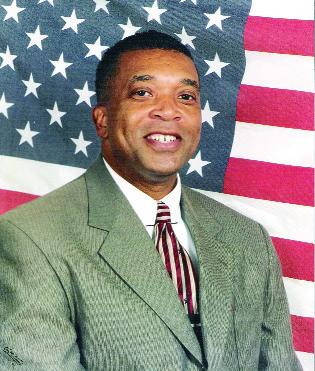
Would you like to become a better father? We
looking for fathers who would be interested in becoming “Team Parents” by dedicating a minimum number of hours with their children in order to become more involved in their lives. We will attempt to make a positive influence in the life of a father.

(StatePoint) When a new school year begins, most teachers don’t wait long before they begin scheduling tests, and assigning loads of homework and reading assignments. Here are three tips for helping kids stay on top of all their coursework:
1. Focus on organization: One of the most valuable life skills a student can develop while in school is time management. Teach kids how to prioritize assignments with upcoming deadlines and those which are easy to knock off their to-do list. Encourage them to find an organizational tool, such as an academic planner or calendar, that works for them. Depending on their preferences and learning style, they may prefer to use app-based tools. The important thing is that they always know what is on their to-do list and when it must be completed by. If they are struggling, help them chunk their afternoon into seg-
ments so that they budget enough time for each of their tasks.
2. Equip them with high-quality math tools: Math can be a frustrating subject for many students. To make learning simpler, equip them with tools that are incredibly easy to use. With Natural Textbook Display and an intuitive icon menu, the fx-9750GIII graphing calculator from Casio is a solid, affordable choice for quickly grasping new mathematical concepts. And because it features nearly 3,000 functions, including graph plotting, probability distribution, vector arithmetic and spreadsheets, students at all levels will find it an invaluable tool, particularly during test-taking season, as its exam mode makes it approved for the SAT, PSAT, ACT and AP tests. The fx-9750GIII is also capable of programming in CASIO Basic and MicroPython, and Python files are easily stored and
transferred via USB to a computer.
3. Set boundaries: As a parent, it’s essential that you support your child in their academic pursuits, however being too handson during homework time could lead them to rely on you to provide them with answers, not guidance. While this approach may mean they turn their assignments in on time, if they aren’t absorbing the material themselves they could quickly fall behind in the classroom. Set clear boundaries about what your after-school role will be and stick to it. You can also foster your child’s independence and confidence by helping them differentiate between reliable educational resources and misinformation.
With the right tools and habits, students can keep up with their assignments and make the most of their study time.

SouthTate, Corinth, MS
Good and evil reside in all of us by the very nature of things. Impulses or instincts which we might think of as “bad” such as selfishness and pugnacity are there from the start. If you doubt this just look at what makes babies cry: they cry when they are hungry, tired, or uncomfortable. In other words, they cry when things are not going their way, and their cries are essentially selfish demands to be heard and satisfied. Toddlers are no different, often throwing temper tantrums and loving the word “no” more than any other in their limited vocabulary. It takes years to modify these base instincts and even as adults we only gradually come to realize that our mission is to serve others and not ourselves, or at least to put others on the same level as ourselves. The same selfish, pugnacious instincts are still there, but they have been modified. Instead of literally lashing out at our friends and family, we learn that friendly competition, like a game of tennis or even a board game is a more acceptable way to compete. My Tae Kwon Do instructor used to say that men and boys should practice martial arts as a way of honing this instinct for fighting in a pro-social way. Mankind has not yet learned as a species how to channel the instinct for war and pillage into something pro-social, but we can only hope and pray that we are moving in that direction.
–Christopher Simon

Take a Peach to the Beach
er brings with it an abundance likepeachesthatreachtheir

There's no disputing the power of food to provide consolation in times of stress, and a classic meatloaf is no exception. There are very few dishes that combine tradition and innovation the way that meatloaf does. My husband, Michael, loves meatloaf, and evidently, he's not alone.
Statistically, affluent baby boomers order the entrŽe on a regular basis when dining out. Whether it's made from ground beef combined with pork or veal, or a more modern version featuring ground
turkey or chicken, meatloaf is at the top of the list of comfort foods. It's about time this humble dish got the recognition it deserves.
It takes about 1 1/2 pounds of ground meat to make a meatloaf that serves six people. I've found that "marinating" the ground meat in a bowl with 1/4 cup of water, a tablespoon of mild to medium salsa, and a tablespoon each of Worcestershire sauce and steak sauce makes for a moister, more flavorful meatloaf.
I season my meatloaf with salt, pepper, minced bell pepper, garlic, onions and 1/2 of a shredded carrot, along with fresh herbs including parsley, thyme and basil or a tablespoon of dried Italian Seasoning.
A cup of a starch or binder

is the next component in a classic meatloaf. I use seasoned breadcrumbs or crushed crackers, and an egg. A gentle touch when combining the mixture ensures that the meatloaf will be well-seasoned, but won't be tough.
The final step in making a

traditional meatloaf is adding the "gravy." I combine ketchup with salt, pepper and medium salsa or barbecue sauce. I pour off any accumulated fat, and then slather the topping on the meatloaf halfway through the cooking process.
Meatloaf isn't a complex dish, nor does it make a visually stunning presentation. As a friend of mine once said, "It's a lot of meat in a loaf, and you don't have to chew it very much -- what's not to like?"
Meatloaf has provided a tasty way to stretch a dollar for generations of American families. In these uncertain economic times, we could all use a plate full of comfort.
The great thing about this recipe from the Betty Crocker kitchens (www.bettycrocker.
com/recipes) is that the meat loaves cook quickly, and provide individual servings. This would make a great maincourse dish for children or a unique appetizer for a retro recipe party.
1/2 cup ketchup
1/2 tablespoon packed brown sugar
1 pound lean (at least 80 percent) ground beef
1/2 pound ground pork
1/2 cup Original Bisquick mix
1/4 teaspoon pepper
1 small onion, finely chopped (1/4 cup)
1 egg
1. Heat oven to 450 F. In small bowl, stir ketchup and brown sugar until mixed; reserve 1/4 cup for topping. In large bowl, stir remaining ingredients and remaining
ketchup mixture until wellmixed.
2. Spray 13-by-9-inch pan with cooking spray. Place meat mixture in pan; pat into 12-by-4-inch rectangle. Cut lengthwise down center and then crosswise into sixths to form 12 loaves. Separate loaves, using spatula, so no edges are touching. Brush loaves with reserved 1/4 cup ketchup mixture.
3. Bake 18 to 20 minutes or until loaves are no longer pink in center and meat thermometer inserted in center of loaves reads 160 F.
Substitution: While the mixture of ground beef and pork gives these little loaves a unique flavor, you can also use 1 1/2 pounds of ground beef instead of the mixture.



















































• Cell phones get dirty — especially touch-screen phones. Be sure to wipe the surface of your phone daily during cold and flu season. Use an approved antiseptic wipe for electronics.
• “I used to hate planning our family’s weekly meals. Now we decide together at dinner on Friday night. We agree on meals for the week, and I can get a shopping list together in time for weekend shopping. It’s made for less groans at mealtime, and the kids have been surprisingly creative and flexible about trying new things now that they are part of the choosing process.” — T.L. in Minnesota
• “To keep things running smoothly in the morning, all four of my children must be dressed, with shoes, and seated for breakfast before any television can come on. There’s suddenly a lot of peer pressure to get up and dressed, and much more helpfulness in my morning routine.” — A.M., via email
• “I have found myself with an abundance of peppers from my garden, so I cleaned and chopped them, then froze them. I am able to take out what I need, and they won’t spoil.”
— C.E. in Florida
• Creative uses for kids’ artwork: Tape to cardstock for a homemade greeting card for any occasion. Hang from the bathroom mirror. Laminate and use as placemats. Large pieces can be used as wrapping paper. Frame and donate to local senior centers.
• To keep windshield wipers clean between replacement periods, dampen a soft cloth with rubbing alcohol and wipe the length of the blade.
Send your tips to Now Here’s a Tip, c/o King Features Weekly Service, P.O. Box 536475, Orlando, FL 32853-6475 or e-mail JoAnn at heresatip@yahoo.com.
By Samantha Weaver
• It was noted American wit Groucho Marx who made the following sage observation: “There’s one way to find out if a man is honest — ask him. If he says ‘Yes,’ you know he is a crook.”
• When the city of Los Angeles was founded, it was given the name “El Pueblo de Nuestra Senora de los Angeles de Porciuncula,” which translates to “The Town of Our Lady of the Angels of Porciuncula.” Back then, in 1781, there were just 52 settlers to start what is now the second most populous city in the country.
• When speaking of dead languages, Latin is the one that probably comes to mind most often. It’s not quite dead, though; it’s the official language of Vatican City.
• Those who keep track of such things say that a professional ballet dancer goes through about 130 pairs of toe shoes in a single year.
• The yo-yo became popular in the United States after it was marketed by Donald F. Duncan Sr., a businessman from Chicago, but he didn’t invent the toy. In 1928, Duncan was on a business trip to San Francisco when he saw Philippine immigrant Pedro Flores, who had gotten financing to manufacture the yo-yos and had trademarked the name, demonstrating how to use the toy. Duncan realized that the toy had the potential to be a huge success, so he paid Flores $5,000 for all the rights. Incidentally, the name “yo-yo” means “comecome” in the native language of the Philippines.
• If you’re like the average American, showers account for nearly onethird of your home water use.
***
Thought for the Day: “Any reviewer who expresses rage and loathing for a novel is preposterous. He or she is like a person who has put on full armor and attacked a hot fudge sundae.” — Kurt Vonnegut Jr.



(StatePoint) The United States is one of the world’s largest consumers of seafood, and is the largest market for canned tuna. Unfortunately, advocates have found that most tuna found on supermarket shelves comes from fishing methods that cause environmental destruction and put workers at risk.
Oceans are being depleted by overfishing and destructive fishing practices that disrupt marine ecosystems and harm wildlife. What’s more, the fishing industry also relies heavily on forced labor and human trafficking, with reports of 20-hour work days, lack of potable water and nutritious food, violence and even death. In fact, a report from Pew Charitable Trusts found that 100,000 fishing-related deaths occur annually. Workers have reported being beaten, abused and forced to work on ships for months or years at a time.
Shining a spotlight on the companies profiting the most from tuna fishing, Greenpeace USA’s third edition of the “High Cost of Cheap Tuna Retailer Report” scorecard measures which major grocery chains are leaders in sustainable and ethical seafood and which are falling behind. Only two of the 16 retailers surveyed, Aldi and Hy Vee, received a passing score. To find out if your supermarket is selling sustainable seafood, visit www.greenpeace.org.
The report found that while a handful of retailers have taken key steps towards improved transparency – in some cases, publishing their vessel list and vessel supplier lists so that trade unions and worker rights organizations know which companies are in the end-buyer’s supply chain – others have seemed to turn a blind eye to the problem and have made only marginal improvements or have
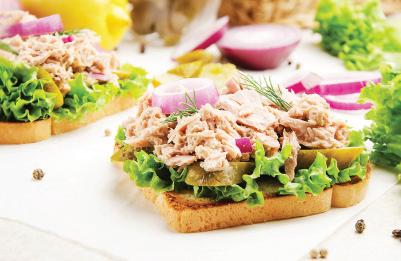
maintained the status quo.
“There should be no place for modern slavery and environmental destruction on U.S. store shelves. Retailers need to take responsibility for the products they are selling and profiting from,” says Charli Fritzner, Greenpeace USA’s Beyond Seafood project lead.
According to Fritzner, consumers can make an impact by starting a dialogue with their grocery stores. She advises asking about their tuna suppliers, including whether the store can trace their tuna back to the vessel it was caught on, what they know about the people working on the vessels and their rights, and what policies their suppliers have in place to minimize bycatch of other animals, such as sharks or marine birds.
So how can you make sure the food you feed your family isn’t harming people and the planet?
“Individuals can use their voice to let big retailers know that sustainable, ethical seafood is important to them,” says Fritzner. “However, the onus rests on the retailers themselves. They can build trust with their shoppers and communities by knowing where the food stocked on their shelves comes from, including the labor involved and environmental impact in producing it.”
Zucchini happens to be one of those vegetables that gets far too little respect. I think it might be because its vines are so proficient. No matter how good something is, when it’s overabundant, it somehow is taken for granted. Try this ultraeasy relish, and others just might ask you, “Where in the world did you come up with this great recipe?”
1 1/2 cups finely chopped unpeeled zucchini
1 cup shredded carrots
1/4 cup finely chopped green and/or red bell pepper
1/4 cup finely chopped onion
1/2 cup fat-free Italian dressing
In a medium bowl, combine zucchini, carrots, pepper and onion. Add Italian dressing. Mix gently to combine. Cover and refrigerate for at least 1 hour. Gently stir again just before serving. Makes 6 (1/2 cup) servings.
• Each serving equals: About 28 calories, 0g fat, 1g protein, 6g carb., 231mg sodium, 2g fiber; Diabetic Exchanges: 1 Vegetable.
Shrimp tempura waits for no one — it gets soggy quickly. Serve as soon as the shrimp are lifted out of the pot and drained.
Vegetable oil for frying
For Dipping Sauce:
1/3 cup chicken broth
3 tablespoon soy sauce
2 tablespoon water
1 tablespoon seasoned rice vinegar
1 teaspoon seasoned rice vinegar
2 teaspoon sugar
1 teaspoon minced and peeled fresh ginger
For Batter:
3/4 cup ice-cold water
1 cup cake flour, not self-rising
1 teaspoon baking powder
1/4 teaspoon salt
1 pound large shrimp, shelled, deveined, and butterflied
1. In 5-quart Dutch oven, heat 2 1/2 inches vegetable oil until temperature reaches 400 F on deep-fat thermometer.
2. Meanwhile, in small saucepan, combine broth, soy sauce, 2 tablespoons water, vinegar, sugar and ginger; heat to boiling over high heat. Boil 2 minutes. Strain through sieve into small bowl and keep dipping sauce warm.
3. Pour ice-cold water into medium bowl; sift flour, baking powder and salt into water. With fork, stir just until barely incorporated; a few lumps may remain.
4. Dip 4 shrimp at a time into batter to coat lightly. Allowing excess batter to drip off, add shrimp to hot oil and fry, turning once or twice, until coating is very pale golden, 1 to 2 minutes. With slotted spoon, transfer shrimp to paper towels to drain. Serve immediately with warm dipping sauce. Makes 4 main-dish servings.
• Each serving: About 309 calories, 12g total fat (2g saturated), 140mg cholesterol, 1,355mg sodium, 27g carbohydrate, 23g protein.
Recipe excerpted from “Good Housekeeping Cookbook, Revised Edition: 1,039 Recipes from America’s Favorite Test Kitchen” (Hearst Books).
1. GEOGRAPHY: What U.S. state lies directly south of South Dakota?
2. HISTORY: Which World War II battle was fought entirely by air?
3. FAMOUS PEOPLE: Martha Jane Burke was better known by what name?
4. GENERAL KNOWLEDGE: Who was known as the Maid of Orleans?
5. LITERATURE: Who wrote the book “The Wonderful Wizard of Oz”?
6. LANGUAGE: What is something that is mordant?
7. RELIGION: Who was the first canonized saint of the New World?
8. TELEVISION: Who is the voice of Moe in the animated comedy “The Simpsons”?
9. GEOLOGY: What is coal made of originally?
10. POETRY: Who wrote the line, “But only God can make a tree.”
1. Nebraska
Answers
2. Battle of Britain
3. Calamity Jane
4. Joan of Arc
5. L. Frank Baum
6. Caustic
7. Rose of Lima
8. Hank Azaria
9. Coal is formed from the remains of trees and plants
10. Joyce Kilmer
1. When was the last time before 2010 that no Los Angeles baseball team was in the major-league playoffs?
2. Three Seattle Mariners stole at least 25 bases each during the 2010 season. When was the last time the Mariners accomplished such a feat?
3. Name the last NFL expansion franchise before the Houston Texas in 2002 to win its inaugural regularseason game.
4. How many times has a University of Kentucky Wildcat basketball player been the No. 1 overall pick in the NBA Draft?
5. In the 2010-11 season, Teemu Selanne tallied 80 points, the thirdhighest total for a player 40 or older in NHL history. Who had the top two totals?
6. Who was the first NASCAR driver other than Richard Petty to win the Daytona 500 more than once?
7. Name the last left-handed tennis player before Petra Kvitova in 2011 to win the Wimbledon women’s singles title.
Answers
1. It was 2003.
2. It was 2001 (Ichiro Suzuki, 56; Mark McLemore, 39; Mike Cameron, 34)
3. The Minnesota Vikings, in 1961.
4. Once — John Wall in 2010.
5. Gordie Howe (103 points in 1968-69) and Johnny Bucyk (83 points in 1975-76).
6. Cale Yarborough won it in 1968 and 1977.
7. Martina Navratilova, in 1990.

(StatePoint) Nowadays, organizing your digital possessions, such as beloved photos and videos, and backing up important data, like school and business records, is just as important as keeping your physical surroundings orderly.
Why is backing up data so important? Because so many things can go wrong: from spilling water on your laptop to losing your phone to experiencing a natural disaster. Plus, there’s cybersecurity to think about -- a PC infected by malware is a common cause of data loss.
If you’re like most people and have precious data you want to protect, a common rule of thumb for keeping important files from disappearing forever is the 3-2-1 rule:
• Have three total copies of your data.
• Save copies on two different types of media or devices.
• Keep one backup copy off-site in case of disaster.
“Whether it’s a senior thesis, your business plan or cherished family photos and videos, if it’s important to you, back it up,” says Nitin Kachhwaha, director of product management, Western Digital. “Having a practical 3-2-1 backup strategy in place is essential to providing peace of mind and preserving your files for the future.”
If you’re looking for storage solutions to back up your data, one great option is the My Book desktop drive from WD, which is designed to complement your life with massive space to store your files, ranging from 4TB to 22TB of capacity. An alternative option from the WD brand is the popular and portable My Passport Ultra hard drive that comes with storage up to 6TB, which is the world’s highest capacity 2.5-inch drive. This is a great storage companion for those with an on-the-go lifestyle, equipped with password protection for an extra level of security. (Actual user capacity may be less depending on operating environment. Download and installation required. Terms and conditions apply. User account registration may be required.)
Both come with automatic backup software so you can maintain peace of mind knowing that you are helping keep your data safe. For more information and backup solution ideas, visit https://wd.com.
These days, decluttering doesn’t just refer to nixing household clutter and cleaning out closets, it also includes organizing your digital life by helping to protect your treasured and sensitive data.

(StatePoint) Black/ African American women-owned businesses make significant contributions to the economy and are key to driving small business growth.
In fact, according to the Wells Fargo 2024 Impact of Women-Owned Businesses Report, between 2019 and 2023, Black/African American women-owned businesses saw average revenues increase 32.7%, compared to 12.1% for all women-owned businesses. In spite of this impressive growth, systemic disparities in funding and mentorship opportunities persist. Fortunately, new programs are addressing these gaps.
Funding Opportunities
Financing is central to any business venture, but research shows that women of color receive less than 0.2% of venture-capital funding. With about 61% of Black women entrepreneurs self-funding their businesses, they exhibit higher levels of debt, facing an unfair disadvantage from the start.
New bank and philanthropic programs are helping Black women identify
business goals and objectives; and a Wells Fargobacked $70 million fund in partnership with Hello Alice to improve access to credit and capital for underserved entrepreneurs.
These programs are helping to dismantle financial barriers and build an environment where Black/ African American women-owned businesses can scale, grow and build for the future.
capital opportunities to build sustainable small businesses. In addition to traditional lending, working with Community Development Financial Institutions (CDFIs) and Minority Depository Institutions (MDIs) can create an ecosystem of support that provides additional avenues to accessing capital. These institutions specifically work with underserved entrepreneurs, including those in low-to-moderate income areas and minority populations.
Supporting these organizations and their mission was at the heart of the creation of initiatives like Wells Fargo’s Open for Business Fund, an industry-leading effort that has donated roughly $420 million to nonprofits serving small businesses; the Small Business Resource Navigator, an online portal connecting small business owners to potential financing options and technical assistance through CDFIs; the Capital Pathways Workbook, a free resource that helps entrepreneurs map their capital needs to
Harnessing Mentorship
Beyond funding, the success and sustainable growth of a small business relies on guidance and community support. That’s why it’s so important to invest in education and mentorship programs specifically designed for Black/African American women entrepreneurs. This level of support is at the heart of Milestone Circles, a mentoring program for women entrepreneurs offered by the Nasdaq Entrepreneurial Center and funded by the Wells Fargo Foundation. The majority of participants (86%) have been Black, African American and/or AfroCaribbean, and have learned skills to improve their business alongside fellow entrepreneurs.
As Black/African American women continue taking the lead in business ownership, the banking and business community can take steps to support their momentum, paving the way for their sustained growth and helping make generational wealth an attainable goal for all.

(StatePoint) Staying competitive in today’s market can be a challenge. As the business landscape continues to evolve, paying attention to the competition is more important than ever. Business isn’t run in a vacuum and understanding what’s working — and equally important, what’s not working — for other successful companies is an inte-
gral step in staying ahead of the game.
Here are some ways to do that from the experts at PNC Bank:
One of the easiest things you can do, setting up a Google alert, allows you to immediately be alerted of big news that’s being reported about you, your industry or your major competitors.
Poor user experience on a website can drive 50% of potential customers to competitor businesses. “Track what your major competitors are doing on their websites — taking special note of anything new or innovative — to ensure you stay viable in this area. Start by paying attention to their SEO. Compare web traffic and look for similarities and differences in your online strategies,” says Marc McAndrew, head of small business, PNC Bank.
Consumers have indicated in any number of surveys and forums they would leave a brand they’ve been loyal to after three or fewer bad experiences with customer service. It is worth running through your competitor’s customer experience from time
to time to see how smoothly it operates and what they’re doing differently.
There are plenty of automation tools on the market that help track how competitors are doing in various areas. Look for companies that offer things like competitive and social post analysis, social media audits and social listening for the most complete overview.
Technology aside, pricing is one of the most important aspects of a business. Understand where your company falls by comparing pricing strategies among your competitors. Customers are willing to pay more for certain things, so understand your customer base and price accordingly for best results.
Just having the above data on-hand isn’t enough to make a
difference. Besides assessing your competitors, institute the following as benchmarks for your business to keep customers coming your way:
• Provide unparalleled customer service;
• Define and build your brand based on the value you provide;
• Position yourself — and your business — as experts in the field;
• Put a face to your product or service; and
• Have a clear and unique voice in the market.
Check out PNC’s Small Business Insights for more topics to explore on managing, running, and growing your business.
Running a successful business requires a strong business model, a willingness to keep a keen eye on the competition, and the ability to adjust as needed to stay one step ahead of the game.
(StatePoint) Your credit score plays a significant role in your ability to reach your financial goals.
When you apply for a loan, a cellphone, a rental unit or any number of other activities, lenders and potential creditors will look at your credit score to gauge your financial stability and your risk of defaulting on a financial responsibility. The better your score is, the more options will be available to you, including higher chances of getting approved for a loan and better loan terms.
Here’s a look at what financial activities are affecting your credit, as well as some Freddie Mac-approved tips for improving your score.
How do credit scores work? There are many different types of credit scores, but the FICO score is the one used by most lenders. Scores range from 300 to 850 points. According to FICO itself, scores are based on these five factors:
1. Payment history: Payment history accounts for 35% of your credit score and reflects how consistently you’ve made on-time payments.
2. Amount owed: Worth 30% of your

score is your amount of outstanding debt. The lower this figure is, the higher your credit score.
3. Length of credit history: Your credit history, which accounts for 15% of your credit score, is based on the length of time you’ve had credit accounts open in your name. A longer credit history can help your score.
4. New credit you apply for: Credit inquiries are worth 10% of your credit score. Each time you apply for credit, your score goes down — with one exception: when you’re shopping for a mortgage, student or auto
loan, credit scoring models only count one inquiry if your comparison shopping is done within a 14- to 45-day period. Note that inquiries will affect your credit even if you’re denied or ultimately decide against the loan or credit card. Each inquiry affects most scores by 5 points or fewer and can stay on your report for up to 24 months.
5. Types of credit you use: The final 10% of your score is determined by whether you can responsibly use different types of credit, such as installment and revolving debt.
You can get your free credit report from the three main credit bureaus once every 12 months at www.annualcreditreport.com or by calling 877-322-8228.
What behaviors are good for credit? Your credit score will naturally go up and down as you go about your daily life. However, these actions are associated with good credit:
• Making payments on time.
• Keeping your debt load manageable.
• Using as little of your credit limit as possible.
• Paying the full amount due, or at least more than the minimum amount due.
• Reviewing credit reports annually.
• Not shopping for too much credit.
How can you improve your score? If your current credit score has been damaged or is otherwise low, set a goal to improve it. In addition to smart credit management, consider taking the following steps:
• Enroll in a free financial education class, such as Freddie Mac CreditSmart, to acquire the building blocks you need to improve your finances and your credit.
• Build credit through rent payments. Unfortunately, rent payments are not automatically factored into your credit score. That means, for many people, their largest monthly expense doesn’t help them build credit. Talk to your landlord about reporting your payments to the three major credit bureaus. If they’re not able to do so, you can do it yourself through a rent reporting service. To learn more, visit myhome.freddiemac.com/renting/how-get-your-rent-reportedcredit-bureaus.
Good credit expands horizons. No matter where you are in your financial journey, you can take steps to improve your credit and live the life you want.